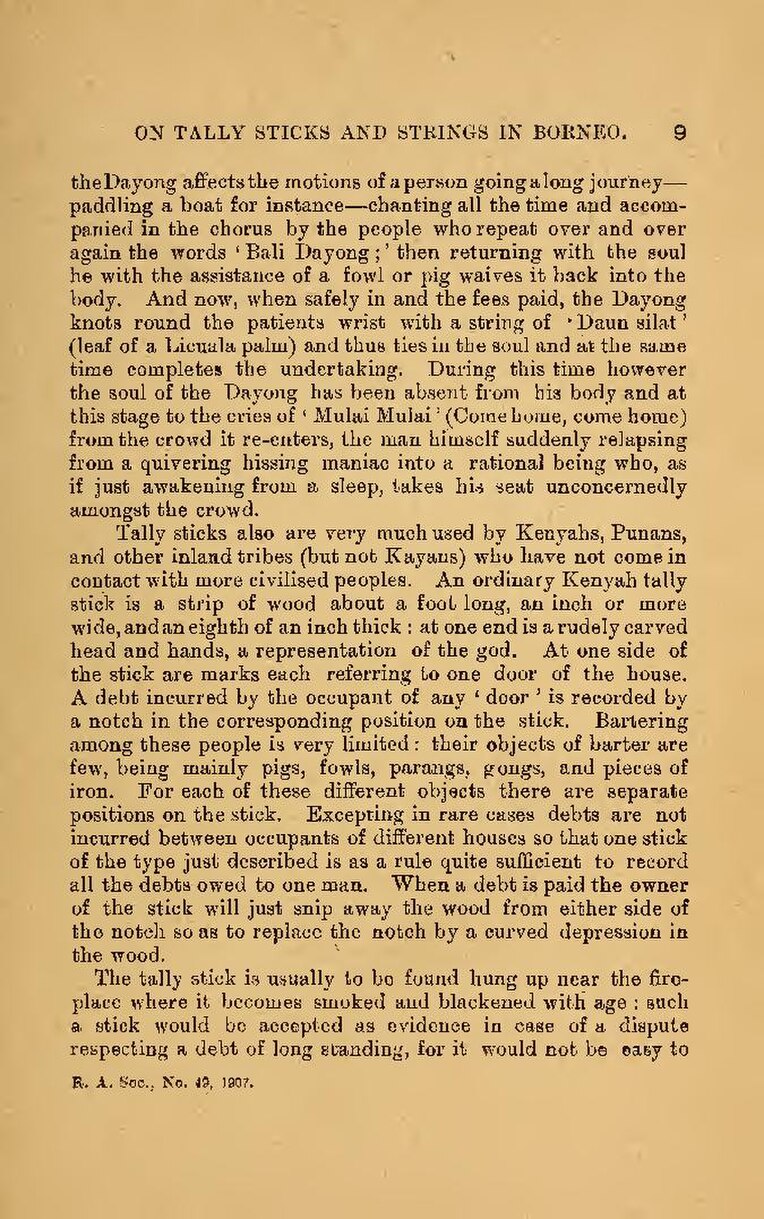the Dayong affects the motions of a person going a long journey— paddling a boat for instance—chanting all the time and accom- panied in the chorus by the people who repeat over and over again the words 'Bali Dayong;' then returning with the soul he with the assistance of a fowl or pig waives it back into the body. And now, when safely in and the fees paid, the Dayong knots round the patients wrist with a string of Daun silat (leaf of a Licuala palm) and thus ties in the soul and at the same time completes the undertaking. During this time however the soul of the Dayong has been absent from his body and at this stage to the cries of 'Mulai Mulai' (Come home, come home) from the crowd it re-enters, the man himself suddenly relapsing from a quivering hissing maniac into a rational being who, as if just awakening from a sleep, takes his seat unconcernedly amongst the crowd.
Tally sticks also are very much used by Kenyahs, Punans, and other inland tribes (but not Kayans) who have not come in contact with more civilised peoples. An ordinary Kenyah tally stick is a strip of wood about a foot long, an inch or more wide, and an eighth of an inch thick: at one end is a rudely carved head and hands, a representation of the god. At one side of the stick are marks each referring to one door of the house. A debt incurred by the occupant of any 'door' is recorded by a notch in the corresponding position on the stick. Bartering among these people is very limited: their objects of barter are few, being mainly pigs, fowls, parangs, gongs, and pieces of iron. For each of these different objects there are separate positions on the stick, Excepting in rare cases debts are not incurred between occupants of different houses so that one stick of the type just described is as a rule quite sufficient to record all the debts owed to one man. When a debt is paid the owner of the stick will just snip away the wood from either side of the notch so as to replace the notch by a curved depression in the wood.
The tally stick is usually to be found hung up near the fire- place where it becomes smoked and blackened with age such a stick would be accepted as evidence in case of a dispute respecting a debt of long standing, for it would not be easy to
